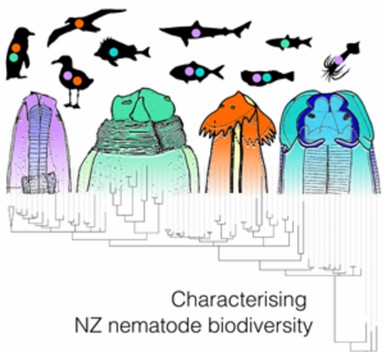Analysis of Genetic Diversity of Plant Nematodes
Genetic diversity is the core of biodiversity. Genetic diversity refers to the sum of all genetic information contained in the genes of animals, plants, and microorganisms. Every species has its unique gene pool and genetic structure, and there are rich genetic variations among different individuals or groups. These genetic variations constitute the genetic diversity of organisms; therefore, genetic diversity refers to the variation in the structure and composition of nucleotides encoding genetic information in essence, mainly including gene mutation, gene recombination, and chromosome aberration.
Lifeasible provides observation services of endoplasmic reticulum in plants to help our customers worldwide in plant science research. Our platform is equipped with cutting-edge facilities and professional experts to support research. Here, we provide various services according to customers' demands.
Analysis of Genetic Diversity at the Morphological Level
- Comprising over a million species, nematodes are likely the most diverse and numerous metazoans in soil and aquatic sediments. Among 26,000 described species, about 4100 are plant parasitic, which causes drastic economic losses to all crops.
- Traditionally, morphological analysis of plant nematodes is based on characteristics such as body length, the morphology of sexual organs, mouth and tail parts, and other physical characters.
 Fig.1 Characterizing of New Zealand's nematode biodiversity. (Bennett J, et al., 2022)
Fig.1 Characterizing of New Zealand's nematode biodiversity. (Bennett J, et al., 2022)
- Lifeasible provides analysis of genetic diversity at the morphological level. We compare the morphological diversity of plant nematodes using optical microscopy, scanning electron microscopy, and so on. In addition, we also provide advanced image analysis, including a deep learning approach and autofluorescence.
Analysis of Genetic Diversity at Chromosome Level
- Genetic variation originates from mutation and recombination and is removed by selection and drift. Like Caenorhabditis elegans, some plant nematodes have six chromosomes, which are largely macro synchronous with their counterparts. Despite this, genomes show significant differences in size, gene content, and repetition patterns.
- We provide analysis of genetic diversity at the chromosome level, including genetic linkage maps, combinatorial physical maps, meiosis maps, cross events, etc.
Analysis of Genetic Diversity at the Molecular Level
- The analysis of genetic diversity at the molecular level is mainly realized through molecular markers, which can directly detect the differences between organisms on the DNA molecule, including coding and non-coding regions, conserved and highly variable regions, nuclear DNA, and organelle DNA.
- Each of these molecular markers has its advantages and specific applications. We provide analysis of genetic diversity at the molecular level, such as restriction fragment length polymorphisms, random amplified polymorphic DNA, amplified fragment length polymorphism, single strand conformation polymorphism, simple sequence repeat, inter-simple sequence repeat, single nucleotide polymorphism, and others.
Lifeasible offers services covering mechanism analysis of effector proteins to meet your research demands. With years of experience in plant science, our professional platforms can help our clients solve types of difficulties. If you are interested in our services or have any questions, please feel free to contact us or make an online inquiry.
Reference
- Bennett J, et al. (2022). "Large-scale genetic investigation of nematode diversity and their phylogenetic patterns in New Zealand's marine animals." Parasitology. 149 (13), 1794-1809.
For research or industrial raw materials, not for personal medical use!
 Fig.1 Characterizing of New Zealand's nematode biodiversity. (Bennett J, et al., 2022)
Fig.1 Characterizing of New Zealand's nematode biodiversity. (Bennett J, et al., 2022)